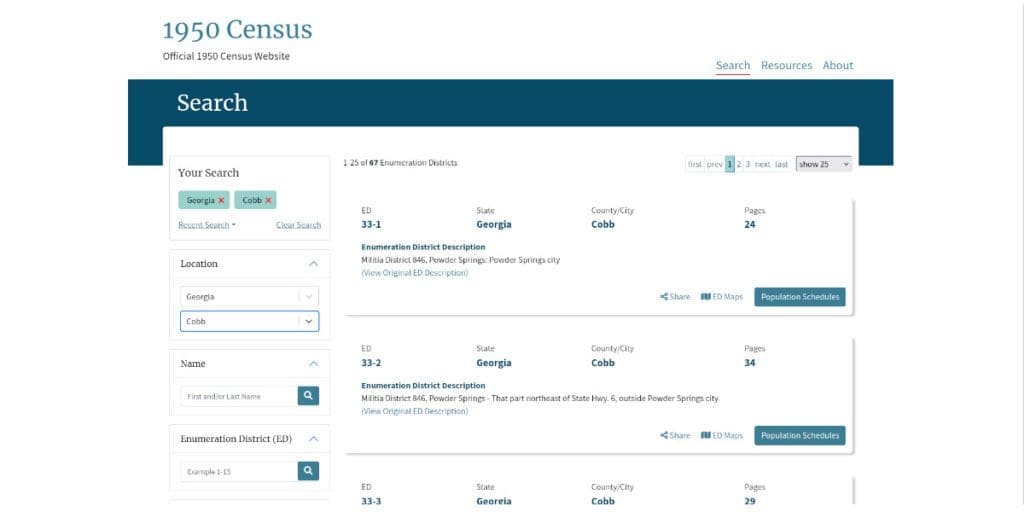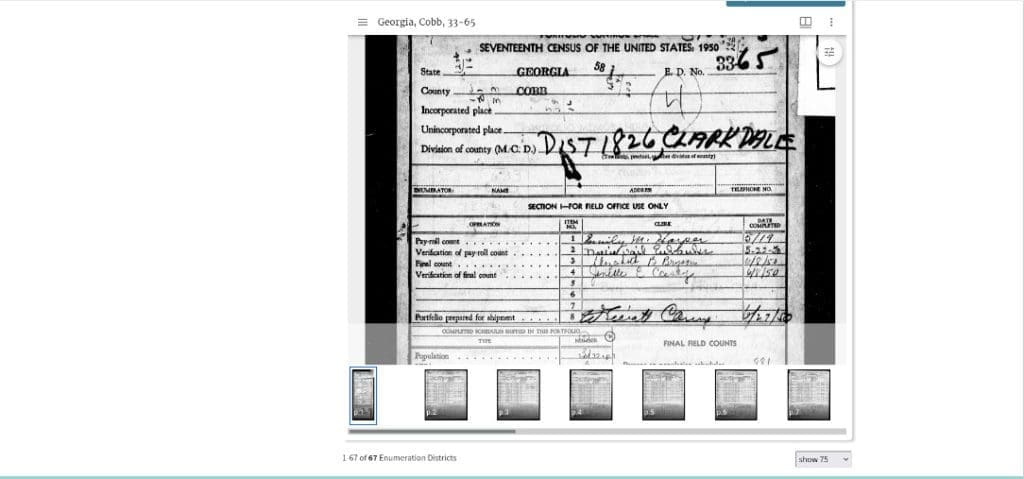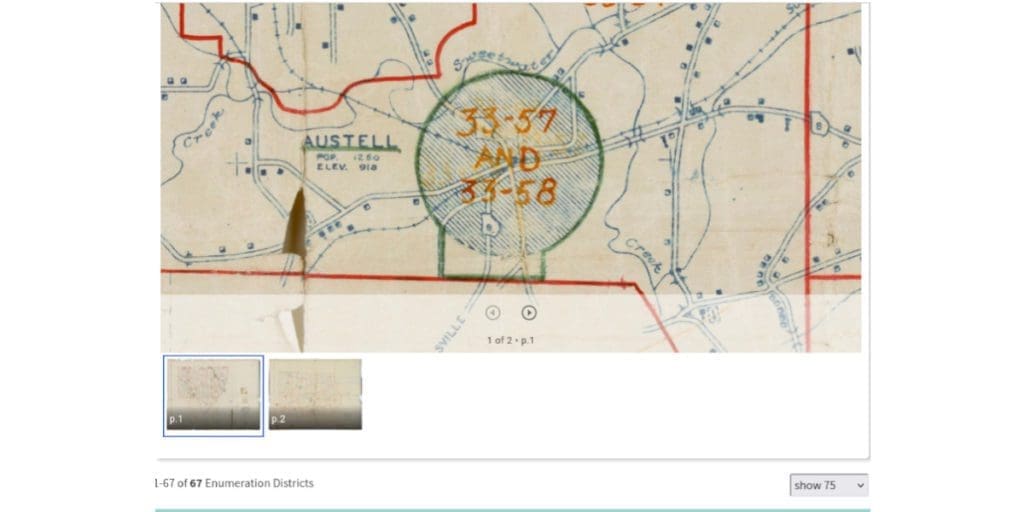If you’ve ever done genealogical or historical research, you’re probably familiar with the handwritten photocopies of reports on individual households scrawled on standardized sheets by census takers. They are often hard to read because of the variations in handwriting of the person filling out the form, and of fading by age, but they are invaluable in tracking families and individuals from census to census.
Individual census records by federal law cannot be released until 72 years after the census, so on April 1 the 1950 census was released.
A year of big change
1950 was five years after the end of WWII [in an amazing mathematical lapse, I wrote “ten” years when this article was first posted — my apologies] , and was near the beginning of the “Baby Boom” that gives a whole generation its name. It was also near the beginning of suburbanization and the shift in the U.S. from a primarily urban/rural population to a majority suburban one.
In releasing the records, Marc Perry, Brian Mendez-Smith and Lynda Laughlin of the U.S. Census Bureau wrote in an article about the records release:
The 1950 Census opens a window into one of the most transformative periods in modern American history, revealing a country of roughly 151 million people who had just recently emerged from the hardships and uncertainties of World War II and the Great Depression.
With little housing construction during the prior two decades, the nation’s population mostly lived in cities and rural areas, often in crowded conditions. Suburbanization had only recently begun and would increase substantially in the coming decades thanks to the GI Bill, sustained postwar economic expansion and construction of a comprehensive interstate highway system.
So how do I get to the Cobb County records for 1950?
To get to the records you can go to the search page at the National Archives by following this link, then hitting the “Begin Search” button and on the left-hand panel selecting “Georgia” and “Cobb County” under the state and county pull-down.
Or more quickly, you can go there via this link to the search that I’ve already done.
Cobb was divided into 67 enumeration districts in 1950, so you’ll be presented with a screen that looks like this:

At this point unless you’re familiar with historical geographies like the militia districts, you might have to muddle around a little to find the area you’re looking for, so clicking on the button marked “ED Maps” will give you an interactive map that is helpful in finding what you are looking for.
But for a simple example, let’s imagine I’m doing research on the Clarkdale thread mill district near Austell. I scrolled down to it, clicked on “Population schedules,” and came to this screen:

You can also get to a map of the enumeration district to make certain that if you’re searching for an individual you aren’t outside the boundaries of where that person lived.
You’ll have to use your mouse or key commands to pan around on the map and zoom in or out, but here’s what I got for the Clarkdale area.

That should be enough to get you started in exploring a part of the county’s development when we were just at the beginning of the explosive growth to come.
The article I cited earlier closes with this observation about the importance of these records (the article was published just prior to the release):
With the upcoming release of the 1950 Census individual records, researchers, genealogists and others will be able to see demographic snapshots of households and individuals and get a clearer picture of the larger societal trends going on at that time.
The 1950 Census might have been the last census your grandparents filled out before moving from the city to the suburbs. Or it might be the first census showing an African American family from the rural South living in an urban neighborhood in the Northeast or Midwest, or a family from the rural Midwest living in California.
A decennial census is, after all, a collection of data on every individual in the United States. After 72 years, the individual stories of each person enumerated in the 1950 Census reverberate through newer generations.

I was recently thinking about this period when I was born in 1956. In grew up in suburban Chicago with my parents who had grew up in rural Mississippi. They were always referring to life in the south along with my grandparents. The opportunities they spoke of gave me plenty of confidence & enthusiasm for the future. And I recall the simplicity of our culture and how we assimilated into suburban life and work.